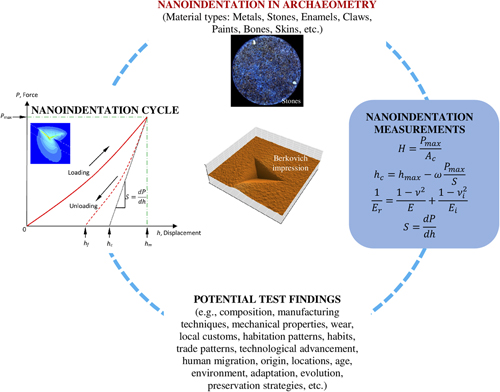Crossref Citations
This article has been cited by the following publications. This list is generated based on data provided by
Crossref.
Fujisawa, Naoki
and
Łukomski, Michał
2019.
Nanoindentation near the edge of a viscoelastic solid with a rough surface.
Materials & Design,
Vol. 184,
Issue. ,
p.
108174.
Beauvoit, Emmie
Ben Amara, Ayed
Tessier‐Doyen, Nicolas
Frugier, Camille
Lemasson, Quentin
Moignard, Brice
Pacheco, Claire
Pichon, Laurent
Chapoulie, Rémy
and
Gratuze, Bernard
2021.
Chemical and Mechanical Characterisation of White Earthenware Glazes from the Johnston‐Vieillard Manufactory (France, 19th Century).
Archaeometry,
Vol. 63,
Issue. 5,
p.
941.
Melelli, Alessia
Roselli, Graziella
Proietti, Noemi
Bourmaud, Alain
Arnould, Olivier
Jamme, Frédéric
Beaugrand, Johnny
Migliori, Alice
Di Girolami, Giuseppe
Cinaglia, Paolo
and
Santulli, Carlo
2021.
Chemical, morphological and mechanical study of the ageing of textile flax fibers from 17th/18th-century paintings on canvas.
Journal of Cultural Heritage,
Vol. 52,
Issue. ,
p.
202.
Ksinopoulou, Evangelia
Dragatogiannis, Dimitrios
Bakolas, Asterios
Charitidis, Constantinos
and
Moropoulou, Antonia
2022.
Physical and mechanical characteristics of TEOS-modified nanocomposites.
Journal of Polymer Research,
Vol. 29,
Issue. 5,
Melelli, Alessia
Jamme, Frédéric
Beaugrand, Johnny
and
Bourmaud, Alain
2022.
Evolution of the ultrastructure and polysaccharide composition of flax fibres over time: When history meets science.
Carbohydrate Polymers,
Vol. 291,
Issue. ,
p.
119584.
Marey Mahmoud, Hussein
2022.
Preservation and Restoration Techniques for Ancient Egyptian Textiles.
p.
60.
Wan Yusoff, Wan Yusmawati
Ismail, Norliza
Mohmad Lehan, Nur Farisa Nadia
Amat, Azuraida
Ku Ahmad, Ku Zarina
Jalar, Azman
and
Abdul Rahman, Irman
2023.
Micromechanical response of SAC305 solder alloy under gamma radiation via nanoindentation approach.
Soldering & Surface Mount Technology,
Vol. 35,
Issue. 1,
p.
51.
Chu, Shimin
Lin, Lanying
and
Tian, Xingling
2024.
Analysis of Aspergillus niger isolated from ancient palm leaf manuscripts and its deterioration mechanisms.
Heritage Science,
Vol. 12,
Issue. 1,
Adams, D S
Boyce, B L
Hooks, D E
Garber, K W
Klitsner, B
Price, S A
and
Blob, R
2025.
A Brief Introductory Guide to Nanoindentation for Comparative and Evolutionary Biologists, with a Case Study of Bone Material Property Diversity across Artiodactyl Skulls.
Integrative Organismal Biology,
Vol. 7,
Issue. 1,
Wheeler, Jeffrey M.
Basu, Indranil
and
Löffler, Jörg F.
2025.
Multi-scale mechanical microscopy via displacement-controlled, high-speed nanoindentation mapping.
MRS Communications,
Vol. 15,
Issue. 5,
p.
915.
Palamarczuk, Valeria
Spano, Romina C.
Lamas, Diego G.
Asto Ramos, Esteban E.
Fuertes, María Cecilia
and
Tomasini, Eugenia
2025.
Mineral beads in an early domestic space of Northwest Argentina: Complementary non-invasive analytical techniques for findings from the Soria 2 site in the Yocavil Valley, Catamarca, Argentina.
Journal of Archaeological Science: Reports,
Vol. 64,
Issue. ,
p.
105164.


